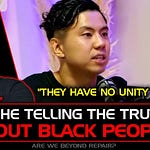The Battle for Free Speech
Free speech is often considered the bedrock of democracy, but its interpretation and application vary across legal systems. In the United States, the First Amendment guarantees broad protections against government restrictions on speech. In contrast, Article 19 of the Universal Declaration of Human Rights (UDHR) and other international treaties frame free speech within a global human rights context, often allowing for more government regulation.
This article will examine how these two frameworks compare, the legal and philosophical differences between them, and the implications of their enforcement in modern society.
I. The First Amendment: The U.S. Standard for Free Speech
1.1 What the First Amendment Says
The First Amendment of the U.S. Constitution states:
"Congress shall make no law respecting an establishment of religion, or prohibiting the free exercise thereof; or abridging the freedom of speech, or of the press; or the right of the people peaceably to assemble, and to petition the Government for a redress of grievances."
This broadly protects speech from government censorship, but it does not shield individuals from private sector censorship, social consequences, or corporate policies.
1.2 Key Free Speech Cases in U.S. History
Schenck v. United States (1919): Established the "clear and present danger" test.
Brandenburg v. Ohio (1969): Set the precedent that speech can only be restricted if it incites imminent lawless action.
New York Times Co. v. United States (1971): Reinforced that the government cannot engage in prior restraint (preventing publication in advance).
Citizens United v. FEC (2010): Defined corporate political spending as free speech.
These rulings demonstrate a strong judicial preference for upholding speech protections unless national security, incitement to violence, or direct harm are at stake.
II. Article 19: The International Approach to Free Speech
2.1 What Article 19 Says
Article 19 of the Universal Declaration of Human Rights (UDHR) states:
"Everyone has the right to freedom of opinion and expression; this right includes freedom to hold opinions without interference and to seek, receive, and impart information and ideas through any media and regardless of frontiers."
However, under the International Covenant on Civil and Political Rights (ICCPR), Article 19 includes limitations on free speech:
1. Respect for the rights or reputations of others.
2. Protection of national security, public order, or public health.
Thus, while Article 19 grants broad free speech rights, it permits more government intervention than the First Amendment does.
2.2 Global Examples of Article 19 in Action
United Kingdom: The Public Order Act criminalizes hate speech, which would be protected in the U.S.
Germany: Strict laws against Holocaust denial and Nazi symbolism.
China: Censorship laws heavily restrict political dissent, claiming national security interests.
India: Laws restrict speech that may incite unrest or offend religious sentiments.
These examples illustrate how Article 19 is often used to balance free expression with social harmony and government interests, unlike the U.S. model, which leans heavily toward protecting speech from state interference.
III. Key Differences Between the First Amendment and Article 19
This table demonstrates that the First Amendment provides more absolute protections, while Article 19 allows for more governmental and social balancing.
IV. The Modern Challenges of Free Speech Under These Laws
4.1 Hate Speech and Social Media Regulation
The U.S. protects hate speech unless it incites violence.
Many European countries criminalize hate speech under Article 19-based laws.
Big Tech companies, operating globally, often moderate speech based on a mix of First Amendment principles and international laws.
4.2 The Disinformation Dilemma
Fake news and misinformation are legal under the First Amendment.
Europe regulates false information that could harm public health (e.g., COVID-19 misinformation laws).
4.3 National Security and Whistleblowing
The U.S. Espionage Act (1917) has been used to prosecute whistleblowers like Edward Snowden.
Article 19 allows for more government leeway to censor speech that threatens national security.
4.4 Cancel Culture vs. Government Censorship
In the U.S., "cancel culture" is a societal reaction, not government censorship.
Under Article 19, cancel culture can overlap with legal restrictions.
V. Which System is Better?
Both systems have pros and cons:
The First Amendment offers the strongest protection for individual expression, but can lead to issues like unchecked hate speech and misinformation.
Article 19 creates a balance between speech and public order, but it opens the door to government overreach.
The ideal approach may depend on societal values:
Do we prioritize absolute free speech, even if it allows harmful ideas?
Or do we accept government intervention to protect social order at the risk of censorship?
These questions remain at the heart of global free speech debates.
Conclusion: The Future of Free Speech
As technology, social media, and political climates evolve, the tension between absolute free speech (First Amendment) and regulated free speech (Article 19) will continue to shape global discourse.
Will the U.S. adopt more restrictions to combat misinformation and hate speech?
Will other countries move toward stronger free speech protections?
One thing is certain—the debate over free speech is far from over.











